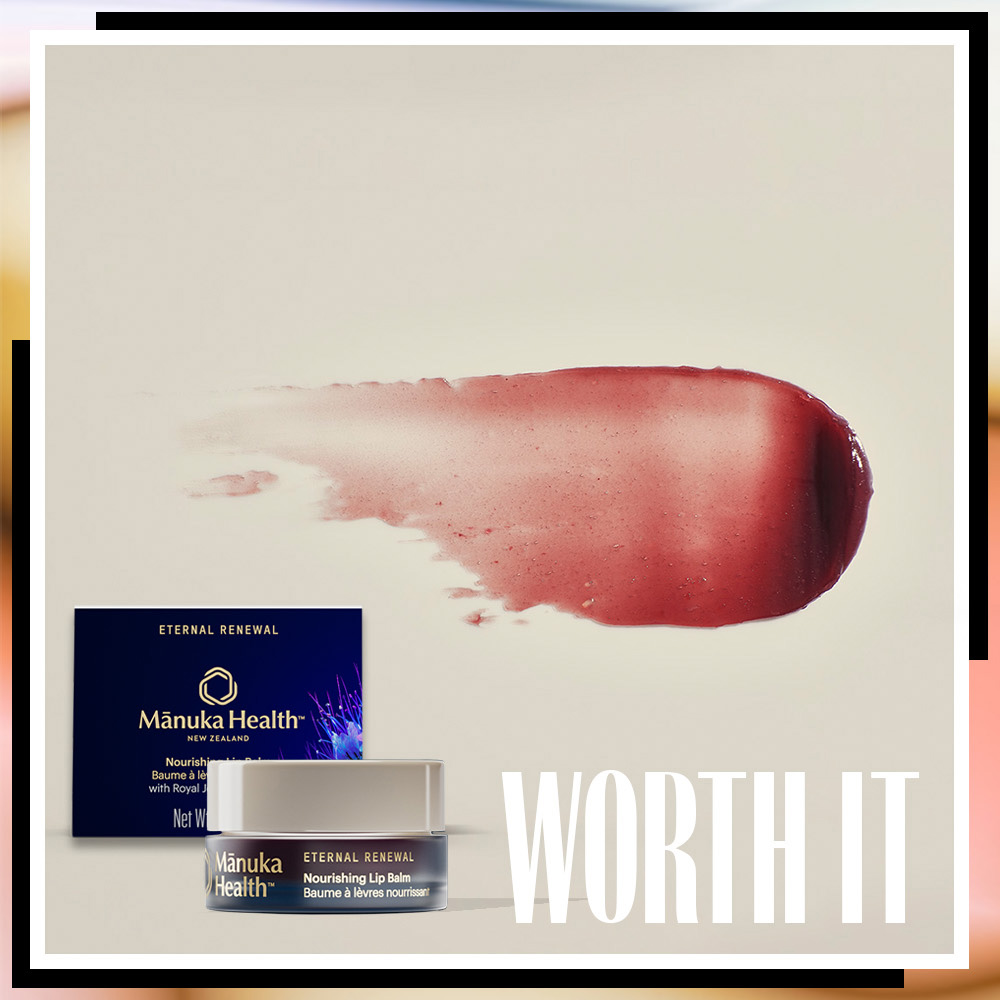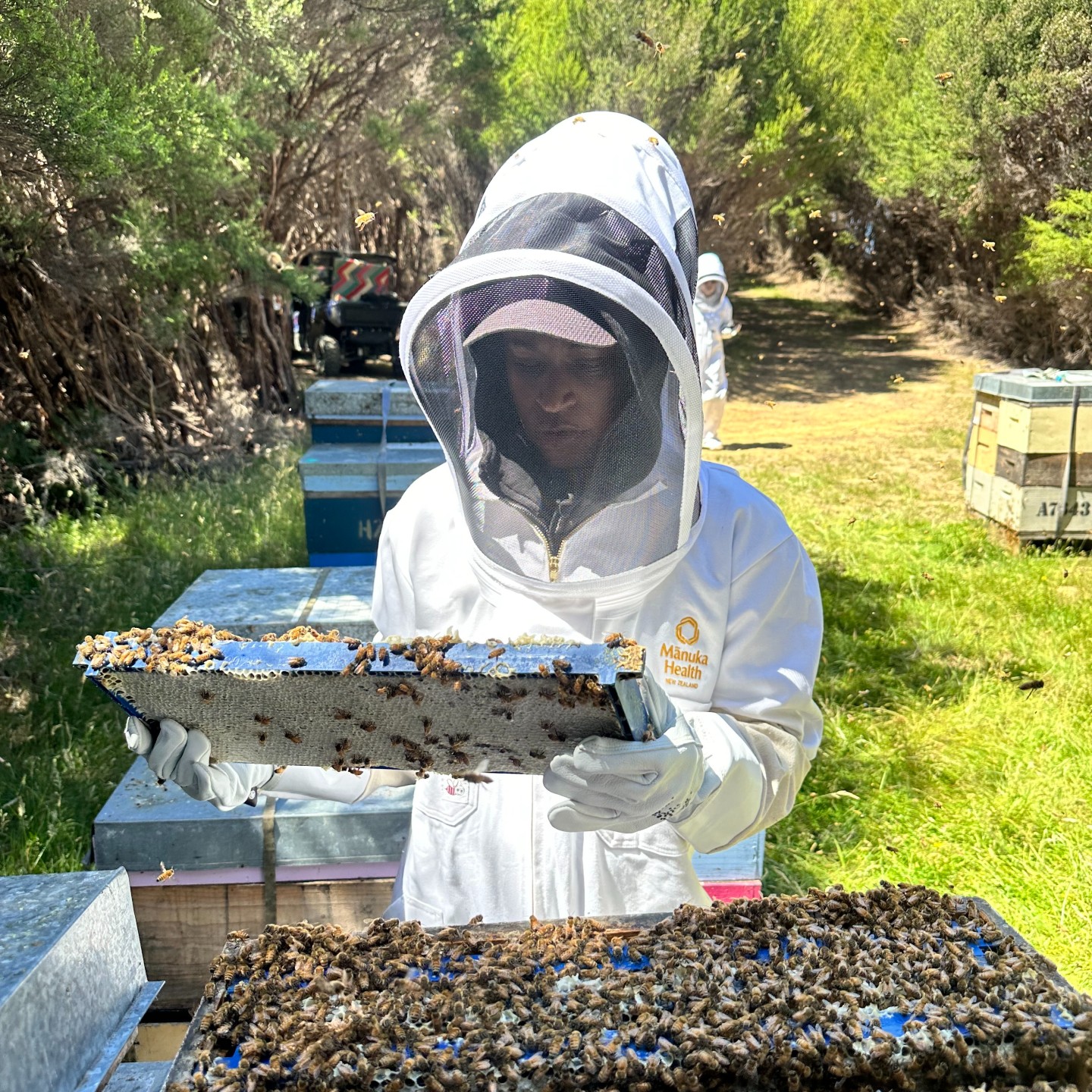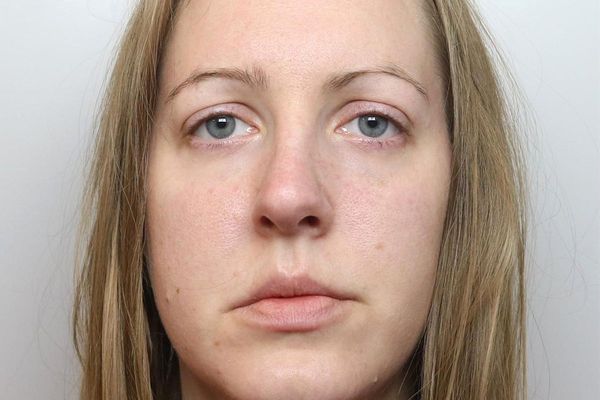
Welcome back to Worth It, our weekly seal of approval on noteworthy launches and bespoke collaborations in the worlds of beauty and fashion. If it's featured here, consider these investments worthwhile.
Thirty-five percent of the world’s food crops rely on pollinators to reproduce. That statistic from the US Department of Agriculture was at the top of my mind as I stood amid a bee hive on a remote island just above the South Island of New Zealand. Standing there shocked me because I’ve never been fond of bees. My disdain for bees began as a seven year old when I was stung three times at once, leaving me with an allergic reaction. But on this sunny Tuesday afternoon in January, the honeybees were harmless; at least that's what I recited to myself repeatedly as their deafening hum surrounded me.
“A huge proportion of the crops around the globe are pollinated by honeybees,'' shouted Rhys Casley, an apiculture manager at Mānuka Health, as a honeybee landed on his netted suit. Casley is a walking encyclopedia of bee knowledge and he and his team invited me to New Zealand to discover the brand’s latest innovation.

For background, Mānuka Health is comprised of scientists, researchers, and beekeepers dedicated to creating Mānuka honey from over 20,000 hives throughout New Zealand. The team carefully designs hives to ensure worker bees gather pollen and propolis, a tree resin from the Mānuka tree, that support the queen bee in laying eggs after mating with a male honeybee. Once the honey is formed, the New Zealand-based company extracts and produces an assortment of Mānuka honey assortments. The key to their operation of crafting honey, ingestibles, and now skin care, lies in MGO, (best known as methylglyoxal) which is a natural compound found in raw honey. MGO is highly effective at killing bacteria, with research showing it can reduce antibiotic-resistant bacteria. Typically, MGO can range from 150 to 1717, with the higher levels more potent.
Down from the top of the mountain, I learn that the benefits of Mānuka honey don't end in killing bacteria. According to studies, it can hydrate skin and minimize inflammation. For these reasons, Mānuka Health launched a collection of serums, moisturizers, and eye creams infused with bee venom and MGO 800+ (one of Mānuka Health's strongest levels of honey), but it’s their lip balm that stands out to me. Along with Mānuka honey, the balm is made of antioxidant-rich elderberry that left my lips with a soft pink hue. It wasn't too pink, or too red; it was the perfect bitten lip look. The subtle color complimented my warm tone and I was certain it would do the same for a multitude of other skin tones. I was sold.
Why I’m Obsessed
As a beauty director, I’ve tried a slew of lip balms and creams. Most tout themselves as the most moisturizing and include exfoliating ingredients (like alpha hydroxy acid or AHAs) to keep lips smooth and supple. I’m partial to the types loaded with shea butter, squalane, or hyaluronic acid, so it never occurred to me that a lip balm made of Mānuka honey would be just as moisturizing. In my mind, a lip balm with even a drop of fermented honey would be thick and sticky—the exact opposite of how I want my lips to feel.
“Mānuka honey acts as a moisturizing agent, attracting and retaining hydration,” says Dr. Brendan Camp, a dermatologist at MDCS Dermatology in New York. “But when using honey on your skin, make sure it is medical grade honey. This will help ensure the consistency and purity of the product. Look for the Unique Manuka Factor (UMF) on the label, which is a measure of the methylglyoxal level and antibacterial properties of the product.”

I quickly learned that each batch of the honeybee’s bounty is tested three times in both its raw and complete state. All Mānuka Health's products are made and sealed in New Zealand, certified by independent companies and given the UMF label.
Clearly, my lips were in good hands.
In terms of application, the lip balm is easy to apply. I use my pointer finger to glide it along my lips like butter. But don’t think of a super greasy, milk-like butter. The lip balm has a slight thickness that’s the consistency of a strawberry jam. Food analogies aside, I like that I can apply it on the go without getting my fingers too messy. After application, I often run the excess balm over my other fingers to give them a touch of hydration too.
After weeks of testing, I concluded the balm looks best when my lips are fully exfoliated—that's when the shine payoff is at its peak. To do an at-home exfoliation, I rub a dry toothbrush over my upper and bottom lip for a few minutes to remove excess skin cells, and then I immediately apply the balm.
Another benefit to note is that unlike other honey-infused balms, this one is transfer-proof. So you can eat, drink, (kiss?) and still have a slight shine afterward.
I’m not a beekeeper, and I’m still not wholly fond of bees, but there is no denying that they are beneficial to crop pollination and our skin. And to me, that’s worth buzzing about.







